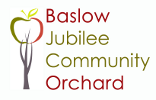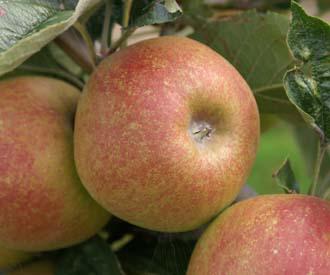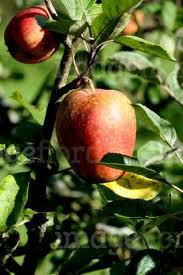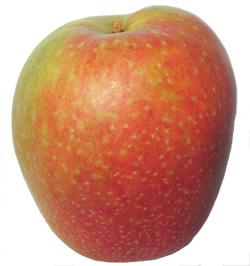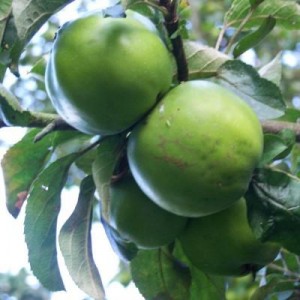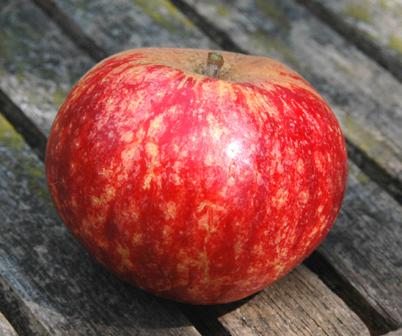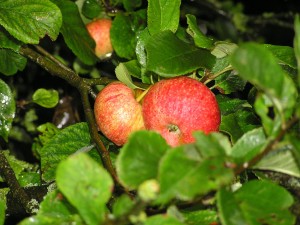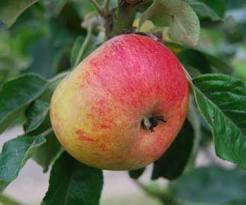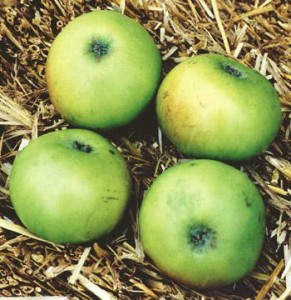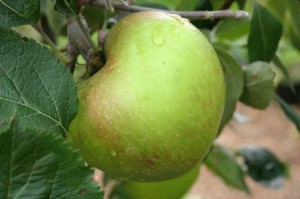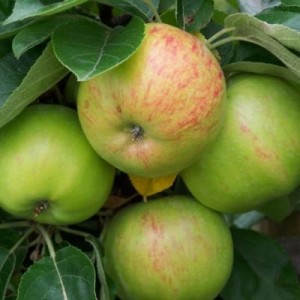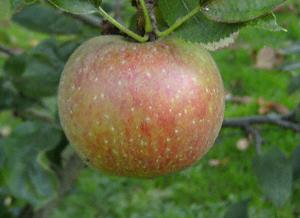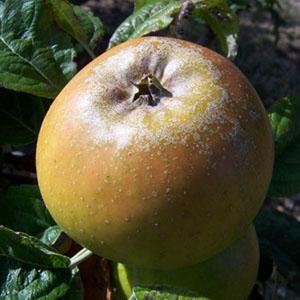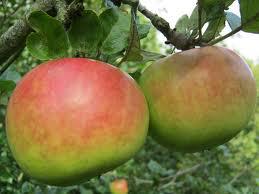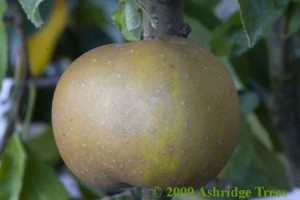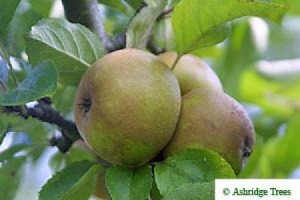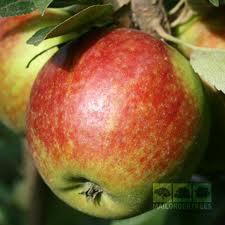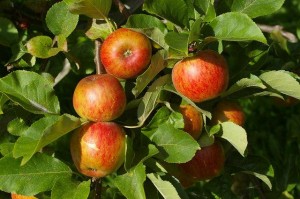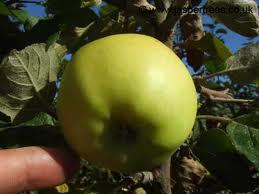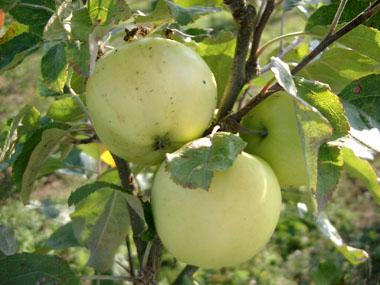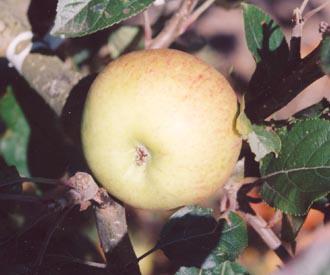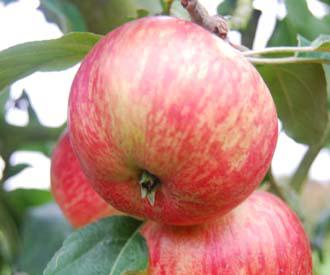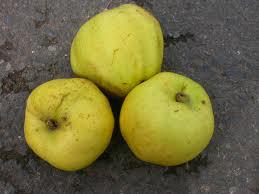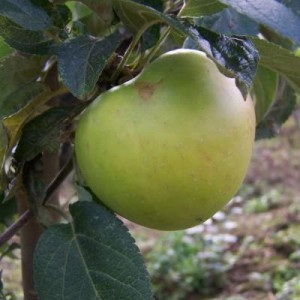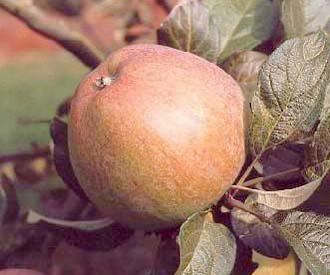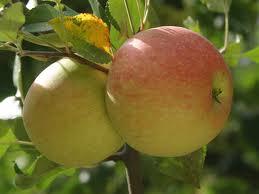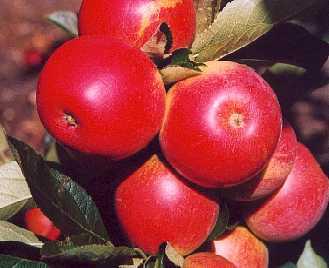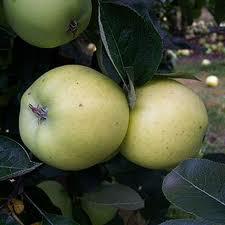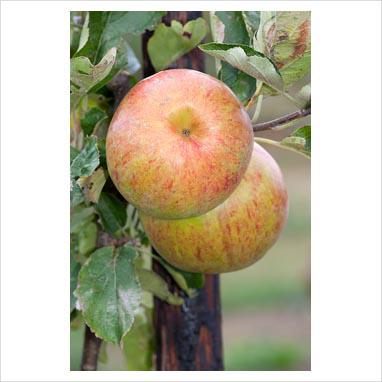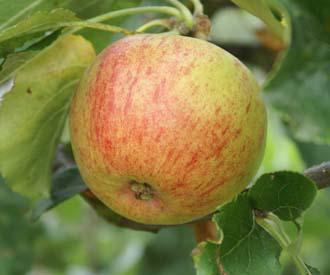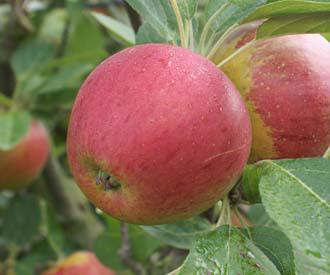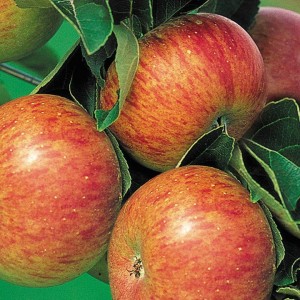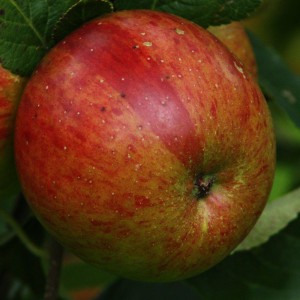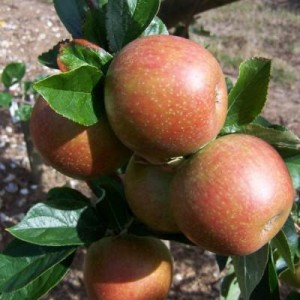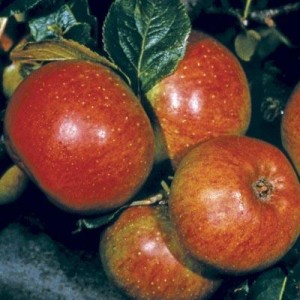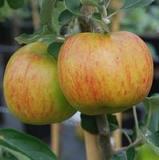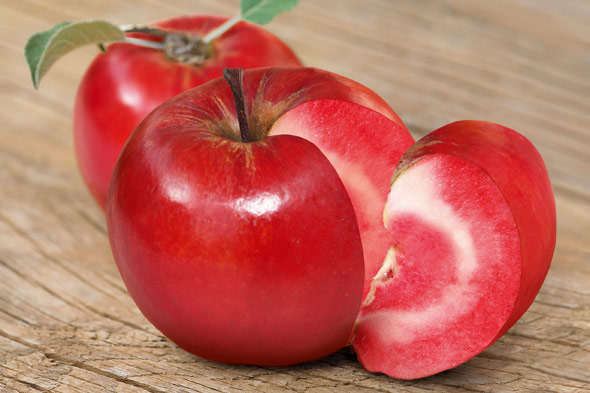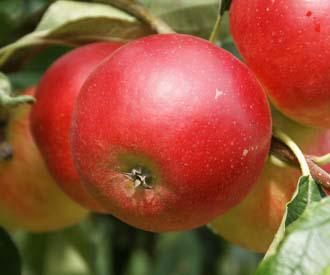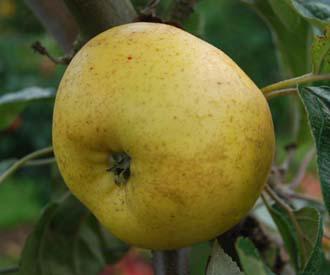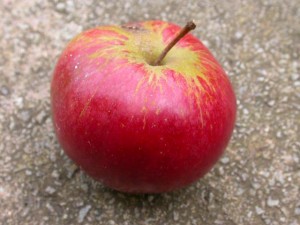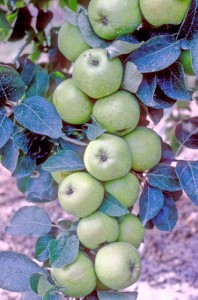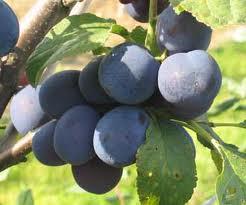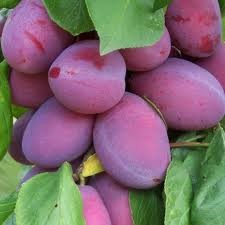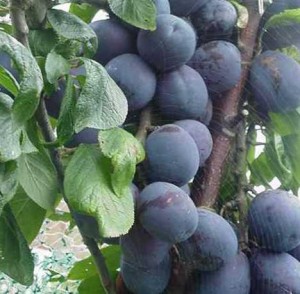This pages provides some details of the trees we have planted. Apples are at the top, in alphabetical order, and other fruit at the bottom. You can visit the plans for the main site and Over Lane to see where they are planted.
We are recording the number of fruit on each tree. This could be interesting to learn which varieties do well in our area. We are counting fruit about the end of July, when the “summer drop” is over but before any harvesting. The results are available in this spreadsheet. Estimated total for 2018 is about 3600 fruit.
The descriptions are based on information combined from the following sources:
- Bultitude John. Apples, 1983, Macmillan Reference Books.
- Morgan J. The Book of Apples, 1993, Ebury Press, London.
- Sanders Rosie. The Apple Book, 2010, Francis Lincoln Ltd.
- Royal Horticultural Society website
- Garden Apple I.D.website
- Keepers Nursery website
- Orange Pippin website
- Orchard Network website
Ripening of fruit is subject to seasonal variation and geographical factors so the quoted seasons and picking dates for each apple are imprecise. Note that optimal picking times may not always be in season for a particular variety.
If you are interested in buying the trees yourself, then there are links to the websites of the nurseries who supplied us. These pages contain further photos and information.
Apples
Acklam Russett
- Very old dessert apple originating in Acklam, Yorkshire first recorded in 1768
- Hardy, suitable for northern climes and resistant to scab
- Pick mid-October, use between December and February
- Small, flat round fruit, pale yellow and green skin covered with a thin grey russet
- Highly flavoured sweet fruit. Keeps well.
This variety is spur-bearing. Our trees are planted on M26 rootstock (dwarfing).
Adam’s Permain
- Old English medium-sized dessert apple
- Also known as Norfolk Pippin or Hanging Permain
- Fairly hardy with some resistance to scab
- Season November-March, picking time mid-October
- Round or slightly elongated fruit
- Pale-green skin becoming golden yellow with variable amount (from one-third to almost complete) covering of dull crimson or brighter orange-red and with small pale ochre dots
- Dry nutty flavour, typical of russett
This variety is spur-bearing. Our trees are planted on M106 rootstock (semi-dwarfing).
Balsam
- A late season apple, predominantly culinary but can be eaten, also known as ‘The Farmer’s Wife’ and ‘Green Balsam’
- Originated in 1750 in Yorkshire and once grown in every orchard in Yorkshire
- Strong grower with vigorous branching habit, consistent cropper
- Bright green apples with attractive pink-white blossom
- Pick November, use December-March
Our trees are planted on M106 rootstock (semi-dwarfing).
Beauty of Bath
- Very early, medium-sized, dessert apple introduced in 1864 by George Cooling of Bath
- Hardy, moderately vigorous, fairly resistant to scab
- Picked in early August
- Flat to round fruit with a hint of ribs
- Pale whitish-green to yellow skin variably flushed and dotted with bright red
- Full-flavoured, sweet with acid tang and an aromatic flavour and fruity scent
This variety is spur-bearing. Our trees are planted on M106 rootstock (semi-dwarfing).
Beeley Pippin
- A mid-season dessert apple derived locally at Beeley by the Rev C Sculthorpe in the 1880s from an Orange Pippin parentage
- Moderately vigorous and clearly able to withstand local conditions
- Season September to October with picking early September
- Medium sized, flat-round fruit and irregular shape
- Skin green becoming yellow with a pink flush and some russet
- Melting cream coloured flesh with an intense aromatic flavour
This variety is spur-bearing. Our trees are planted on M106 rootstock (semi-dwarfing).
Belledge Pippin
- Late-season dual culinary and dessert apple originating in Derbyshire, first recorded in 1818
- Vigorous and heavy cropping
- Medium-sized round fruit, green skin ripening to yellow with grey russet flecks
- Pick October, use November to February
- Sweet, pleasantly acid in flavour
This variety is spur-bearing. Our trees are planted on M106 rootstock (semi-dwarfing).
Bramley’s Seedling
- Classic culinary apple now the most popular in the UK
- First raised between 1809 and 1813 from a seed of unknown origin by Mary Anne Brailsford in a cottage garden in Southwell, Nottinghamshire where the original tree is still growing and producing fruit
- Named after Matthew Bramley, the subsequent owner of the cottage, when the apple was first exhibited in 1876 by Henry Merryweather
- Very vigorous, fairly hardy but somewhat susceptible to spring frost
- Season is November to March with picking in mid-October
- Large to very large, flat-round fruit with irregular ribs
- Bright green skin becoming pale greenish-yellow
- Acid taste, juicy and cooking to a pale cream fluff
This variety is partial-tip-bearing. Our trees are planted on M106 rootstock (semi-dwarfing).
Cockpit Improved
- Developed in Yorkshire in 1850 this is an improved sport of ‘Cockpit’, itself a Yorkshire variety dating from 1831
- Yellow-green skin flushed with pink, medium sized, culinary apple
- Hardy, suitable for Northern Britain
- Pick November, use December-April
- Cooks to a sweet puree with considerable bite
This variety is spur-bearing. Our trees are planted on M106 rootstock (semi-dwarfing).
Court Pendu Plat
- Late season dessert apple first recorded in the early 1600s but is thought by some authorities to have originated in Roman times
- Probably came to Britain from France and its name derives from the French ‘Corps Pendu’, referring to its short stalk
- There are a number of alternative names including ‘Garnon’s Pippin’ which derives from the family home of Sir John Cotterell who may have brought the apple to Britain
- Generally hardy and its late-flowering helps avoid late frosts
- Season is December to April with picking time in mid-October
- Medium sized, flat fruit with only a faint trace of ribs
- Greenish-yellow skin becomes yellow with up to three-quarters flushed with orange-red, deepening to scarlet-red on some fruits
- Fruit has a good balance of sweet and acid, with a sweet scent and rich aromatic flavour
This variety is spur-bearing. Our trees are planted on M106 rootstock (semi-dwarfing).
Duke of Devonshire
- Late to very-late dessert apple raised in 1835 at Holker Hall, the Cumbrian home of the Duke of Devonshire and first introduced about 1875
- Moderately vigorous, resistant to scab and suitable for damper climates
- Season is January to March and picking time is early October
- Medium size, flat-round to round-conical fruit
- Dull green skin becoming pale greenish-yellow and eventually yellow, partly covered with patchy and netted fine grey-brown russet
- Slightly acidic taste with a rich flavour and almost no aroma
This variety is spur-bearing. Our trees are planted on M106 rootstock (semi-dwarfing).
Edward VII
- Very late culinary apple first recorded in 1902 and introduced commercially in 1908 by Messrs Rowe of Worcester
- Hardy, scab-resistant and flowers late so may escape late spring frosts
- Season is December to April with picking time mid-October
- Large round to flat-round fruit
- Bright green skin becoming light yellow-green and then pale yellow with, occasionally, a mottled, pale pink-brown flush
- Fruit is acid with a good flavour and cooks to a red translucent puree
This variety is spur-bearing. Our trees are planted on M106 rootstock (semi-dwarfing).
Egremont Russet
- A mid-season dessert apple the exact origin of which is unknown but is thought to have been in England where it was first recorded in 1872
- Of moderate vigour, tolerating colder and wetter areas, it is important commercially
- Season is October to December with picking time late September
- Fruit is medium sized and flat-round shape
- Skin is yellowish-green becoming golden yellow, often up to half flushed with brownish-ochre to light brownish-red and over half covered by an ochre-brown russet
- Fruits are sweet with a nutty flavour but a tough skin and no aroma
This variety is spur-bearing. Our trees are planted on M106 rootstock (semi-dwarfing).
Ellison’s Orange
- An early dessert apple raised in Lincolnshire in the late 1800s by Rev CC Ellison and Mr Wipf, the gardener at Hartsholme Hall, the home of Rev Ellison’s brother-in-law
- Hardy, suitable for northern climates but with a dislike of too much rainfall
- Fairly resistant to scab but may be prone to canker
- Season is September and October with picking in mid-September
- Medium sized fruit of round, slightly conical shape
- Skin is yellow-green becoming yellow, slightly to three-quarters flushed with brownish-red and with small russet patches
- Fruits have a distinct aniseed flavour and a wine-like aroma
This variety is spur-bearing. Our trees are planted on M106 rootstock (semi-dwarfing).
Emneth Early (Early Victoria)
- An early culinary apple raised by William Lynn of Emneth, Cambridgeshire, first recorded in 1899
- Also known commercially as Early Victoria
- Hardy
- Season Late July to mid-August with picking time early August
- Medium sized fruit of round-conical shape with prominent ribs
- Skin is yellowish-green becoming bright greenish-yellow
- Highly flavoured with a sweet/sub-acid taste. Cooks without added sugar to a light fluff.
This variety is spur-bearing. Our trees are planted on M106 rootstock (semi-dwarfing).
Fillingham Pippin
- Originated in Swanland, Yorkshire in 1835, reportedly from seed imported from America by a Mr Fillingham
- A crisp, sharp tasting dessert apple, with a distinctive flush
- One of the few apples that will grow from cuttings
- Superb pink blossom in Spring
- Pick October, use October-December
This variety is spur-bearing. Our trees are planted on M106 rootstock (semi-dwarfing).
Flower of the Town
- Yorkshire origin in 1831
- Medium sized, flat shaped fruit flushed bright red with stripes.
- Dessert apple with hard, sharp flesh
- Early to mid-season, pick early September, use September to October
- Vigorous and suitable for Northern Britain
This variety is spur-bearing. Our trees are planted on M106 rootstock (semi-dwarfing).
Grenadier
- Suitable for culinary or dessert use and first recorded in Kent in 1862 although it is thought to have been cultivated for many years before that.
- Introduced commercially in 1875
- Fairly vigorous and hardy it is resistant to scab and canker and is very suitable for growing in the north
- Season is August to October with picking time mid-August
- Large round-conical fruit, sometimes flat sided, with distinct ribs
- Pale green skin becomes pale yellowish-green with some green or brown russet dots
- Tangy, juicy with a honey flavour, the fruit cooks to a fluff and is good for baking and purees
This variety is spur-bearing. Our trees are planted on M106 rootstock (semi-dwarfing).
Hornsea Herring
- Originated 1780 in Yorkshire
- A very unusual old, local, culinary variety
- Large fruit with very firm flesh
- Cooks to a an aromatic puree with an acid-drop flavour
- Pick October, use November to January
Our trees are planted on M106 rootstock (semi-dwarfing).
Howgate Wonder
- Cooking apple originating from the Isle of Wight in 1915
- A cross between Blenheim Orange and Newton Wonder
- Heavy, regular cropper, resistant to mildew. Suitable for northern Britain
- Pick mid-October, use November-March
- Very large, round-conical fruit, pale green skin with brown-red flush and stripes
This variety is spur-bearing. Our trees are planted on M26 rootstock (dwarfing).
Hunt House
- An important historical apple. Named after Hunthouse in Goathland, North Yorkshire.
- Reputedly grown in the Whitby area and taken to sea by Captain Cook on his voyages to help prevent scurvy
- Dessert apple, vigorous and tolerant of almost all conditions
- Pick October, use October-December
Our trees are planted on M106 rootstock (semi-dwarfing).
James Grieve
- Popular mid-season dessert apple developed in Scotland by James Grieve an employee of Dickson’s Nurserymen who introduced it in 1893.
- Hardy and adaptable it prefers northern climates, tending to an early drop of fruit which bruise easily in wetter and warmer districts
- Season is September and October with picking time in early September, although it may be used a cooker from July and can keep until December
- Medium sized round-conical fruits
- Bright yellow-green skin becoming yellow, variable speckled and striped with bright red
- Balanced sweet/acid taste
This variety is spur-bearing. Our trees are planted on M106 rootstock (semi-dwarfing).
Katy
- A ‘modern’ dessert apple, dating from 1947 but a vigorous, heavy cropper and frost and canker resistant so suitable for northern Britain
- A cross between James Grieve and Worcester Pearmain first produced in Sweden (original name Katja)
- Early season, pick early September and use September-October
- Medium size, conical fruit. Pale green to yellow skin with a bright red flush
- Sweet with some acidity and good for juicing
This variety is spur-bearing. Our trees are planted on M26 rootstock (dwarfing).
Keswick Codlin
- Very old, mid season cooking apple introduced by John Sander, a Keswick nurseryman in 1790 and reported to have been found by him growing among a quantity of rubbish behind a wall at Gleason Castle near Ulverstone
- Hardy and moderately vigorous
- Season late September to October, picking time late August
- Medium to large in size and round-conical in shape, flattened at the base and with prominent ribs giving a flat-sided appearance
- Pale green skin becoming pale yellow with a slight, streaked flush of grey-orange or grayish-brown
- Yellow-white flesh of coarse texture cooks to a froth
This variety is spur-bearing. Our trees are planted on M106 rootstock (semi-dwarfing).
Lamb’s Seedling
- A late season apple for mixed culinary and dessert use. Raised around 1866 by Joseph Lamb, Head Gardener of Mr Meynell of Meynell Langley, Derby
- Moderate vigour
- Season October to January with picking early October
- Large size fruit, flat-round in shape
- Green-yellow skin with delicate flush and interrupted pale red stripes
- Sharp flavour
This variety is spur-bearing. Our trees are planted on M106 rootstock (semi-dwarfing).
Laxton’s Epicure
- An early dessert apple raised in 1909 by Laxton Bros Ltd of Bedford from a cross between Wealthy and Cox’s Orange Pippin
- Hardy and frost resistant
- Season late August to mid-September with picking time late August
- Medium size conical fruit, regular with faint ribs
- Skin pale yellowish-green with a dull brownish-red flush and short brownish-crimson stripes
- Sweet, juicy and slightly pear-flavoured
This variety is spur-bearing. Our trees are planted on M106 rootstock (semi-dwarfing).
Laxton’s Superb
- Dessert apple raised in 1897 by Laxton Bros, Bedford.
- Vigorous, resistant to mildew, canker and frost but slight susceptibility to scab
- Late season, pick mid-October, use Nov-Jan
- Medium size, conical-round fruit. Greenish yellow skin with purple-red flush and some russet patches
- Sweet but variable flavour. Keeps well.
This variety is spur-bearing. Our trees are planted on M26 rootstock (dwarfing).
Lord Lambourne
- Mid season dessert apple raised by Laxton Bros, Bedford in 1907 from James Grieve x Worcester Permain and named after the then president of the Royal Horticultural Society
- Moderately vigorous and suitable for northern areas
- Season late September to mid November with picking time late September
- Medium sized fruit with a round to flat-round shape and a trace of ribs
- Pale greenish-yellow skin, variably flushed red, green or bright scarlet and short broken stripes of darker red
- Fruits are juicy, sweet and acidic with a strong sweet aroma
This variety is partial-tip-bearing. Our trees are planted on M106 rootstock (semi-dwarfing).
New Bess Pool
- Dessert apple raised in Stanton-le-Dale, Yorkshire in 1850 from a Bess Pool seedling. (Bess Pool itself dates from 1750 in Nottinghamshire, but cropping is not reliable)
- Vigorous and frost resistant
- Late season, pick mid-Oct, use Dec-Feb
- Medium to large conical-round fruit. Pale greenish yellow skin with crimson flush
- Sweet, aromatic flavour. Keeps well.
This variety is partial-tip-bearing. Our trees are planted on M106 rootstock (semi-dwarfing).
Newton Wonder
- A late culinary apple. Sources differ as to its origin. One account says it was raised by Mr Taylor of King’s Newton, Melbourne, from Dumelow’s Seedling x Blenheim Orange in about 1887. Another says it was discovered growing out of a thatched roof of the Hardinge Arms, a pub in King’s Newton.
- Very hardy and very vigorous if not on dwarf rootstock
- Season is November to March with picking time mid-October. Keeps until Easter
- Very large fruit, flat-round with very flattened apex and base
- Skin is yellow-green becoming bright golden yellow up to three-quarters flushed to brownish- to very dark red and with broad, broken stripes of crimson
- Fruits are slightly acid and cook to a yellow fluff. Traditionally used in mincemeat and in stuffing for turkey at Christmas.
This variety is spur-bearing. Our trees are planted on M106 rootstock (semi-dwarfing).
Ribston Pippin
- A very old dessert apple developed at Ribston Hall in Knaresborough, Yorkshire, said to be from seed brought from Rouen in France in 1688. The original tree died in 1835 after it had been brought down by gales in 1810. A parent of Cox’s Orange Pippin.
- Reasonably hardy
- Season October to December with picking in early October
- Medium-large fruit of round-conical shape, flattened at the base with some unequal-sized ribs giving an irregular appearance
- Greenish-yellow skin with a prominent orange-brown flush and numerous broken stripes of red
- Aromatic flavour with a hint of pear-drops
This variety is spur-bearing. Our trees are planted on M106 rootstock (semi-dwarfing).
Redlove Era
- Redlove apples are a series of several cultivars recently bred by Markus Kobelt in Switzerland
- They are hybrids from cross-pollination of red-fleshed and scab-resistant plants.
- The fruit are red on the outside and inside, with a white line in the middle.
- Very intense flavour
- Harvest at the end of September, ready to eat once picked
- Naturally storable until Christmas
Our tree is planted on M106 rootstock (semi-dwarfing).
Scrumptious
- A very recent apple, bred by Hugh Ermen in Faversham, Kent in 1984
- One of the best early season dessert apples
- Medium size, red fruit with a distinct honeyed flavour
- Moderately vigorous, resistant to frost, scab and mildew, suitable for northern and wet regions
- Pick and use in September
This variety is spur-bearing. Our trees are planted on M106 rootstock (semi-dwarfing).
Sharleston Pippin
- Origin in Sharleston, West Yorkshire, 1888
- A yellow, savoury dessert apple of small size
- Savoury flavour with soft, juicy flesh
- Pick mid-September, use September-October
This variety is spur-bearing. Our trees are planted on M106 rootstock (semi-dwarfing).
Sunset
- Mid to late season dessert apple raised from a pip of Cox’s Orange Pippin in Kent in the 1930s
- Moderately vigorous and hardier than Cox’s Orange Pippin in moist climates
- Season is October to December with picking in late September
- Medium size flat-round fruit
- Skin greenish-yellow becoming yellow and with a bright orange to scarlet flush and broad broken stripes of crimson
This variety is spur-bearing. Our trees are planted on M106 rootstock (semi-dwarfing).
Worcester Pearmain
- Mid-season dessert apple raised near Worcester in about 1870
- Moderate vigour, hardy, resistant to mildew and frost and a reliable cropper
- Season September to October and picking time early to mid-September
Medium sized fruit, conical in shape - Skin is pale greenish-yellow becoming pale yellow and covered almost completely with a vivid red flush, paler on the shaded side
- Fruits are sweet and the flavour develops best if left to ripen on the tree. (Commercially they are often picked too early)
This variety is partial-tip-bearing. Our trees are planted on M106 rootstock (semi-dwarfing).
- 2017 crop: 20 apples, ready August. Very Juicy.
Yorkshire Aromatic
- Thought to originate from Yorkshire in 1945 but introduced there from Scotland
- Medium sized yellow-orange fruit with greenish-white flesh
- Excellent culinary variety producing a sweet-sharp puree
- Pick September, use October-December
This variety is spur-bearing. Our trees are planted on M106 rootstock (semi-dwarfing).
Plums and Damsons
Czar
- Usually considered as a cooking plum but sweet enough when ripe to make a good dessert. Raised from a cross between Prince Englebert and Rivers Early Prolific by Thomas Rivers, Sawbridgeworth, Hertfordshire, UK in 1871. Named because the Russian Emperor was on a visit to the UK at the time.
- Compact hardy tree suitable for most parts of the UK and areas subject to spring frosts.
- Season early August
- Medium-sized, oval-oblong fruit. Stone is small and free.Blue-black bloomy skin.
- Tender yellowish green flesh. Pleasant sharp flavour. Can be tough skinned
Our trees are planted on St Julian rootstock (semi-vigorous).
Giant Prune
- Raised by Luther Burbank, Santa Rosa, California, USA from a cross between d’Agen and Ponds Seedling and introduced in 1893. Was at one time grown commercially in the UK.
- Moderate vigour and regular but not heavy crops.
- Season September
- Large, long oval fruit with a distinct neck.
- Bright red skin with a fine purple bloom and numerous russet dots.
- Firm, yellow flesh. Attractive looking fruit but of only moderate flavour as a dessert plum. Ideal for jams or chutney making as the free stone can be separated very easily.
Our trees are planted on St Julian rootstock (semi-vigorous).
Merryweather
- A culinary damson, raised at and named after Merryweather’s Nursery, Southwell Nottinghamshire, UK and introduced in 1907. Parentage is not known.
- Moderately vigrous spreading tree resembling a plum tree rather than a damson tree in many respects. Regular, good cropper.
- Season early September
- A very large fruit for a damson, the size of a small plum.
- Blue-black skin with a heavy bloom of lighter blue.
- Firm, greenish yellow flesh. Clinging stone. Good damson flavour. Good for freezing and using during the winter.
Our trees are planted on St Julian rootstock (semi-vigorous).
Victoria
- A very popular dessert and culinary plum. The original seedling was found in a garden at Alderton, Sussex. It was bought by Denyer a nurseryman at Brixton in London who introduced the variety c 1840. It is the most widely grown commercial variety in the UK.
- Moderately vigorous and a heavy cropper sometimes producing crops which are too heavy and result in small fruit or broken branches. Frost resistant.
- Season late August
- Medium large, oval fruit.
- Pinkish red skin when ripe with a pale blue bloom.
- Yellow, grainy, firm juicy flesh. Quite sweet but with some acidity.
- Produces a pink syrup and an almond aroma when cooked.
Our trees are planted on St Julian rootstock (semi-vigorous).
